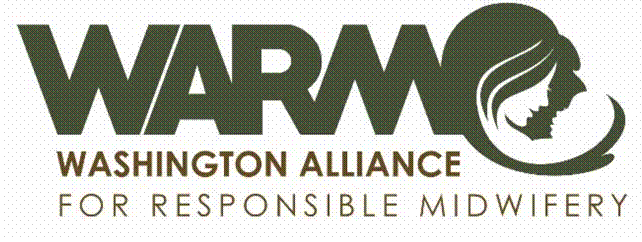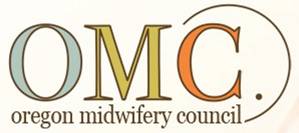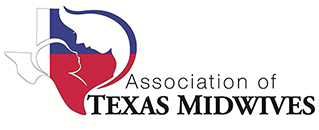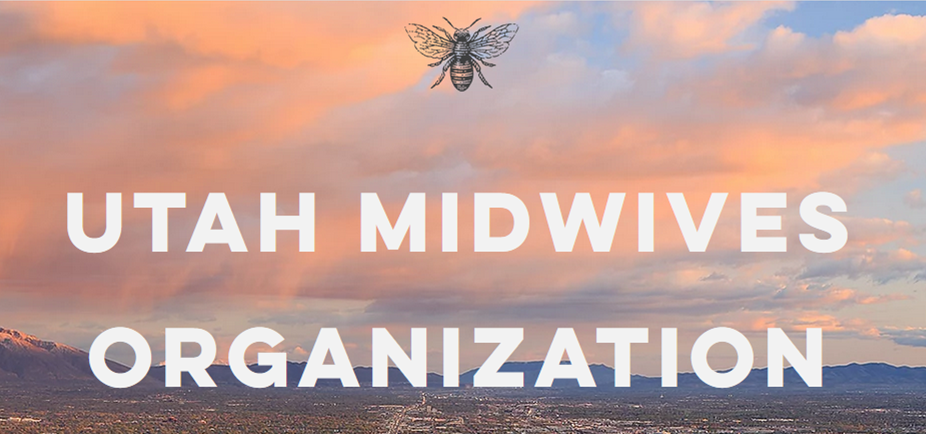Home Birth
- leaving better children to our planet -
 What's it all about?
What's it all about?
Is it really safe?
I believe that everyone should read the research for themselves. I would want that in any case, but it sure doesn't hurt that all of the most significant research consistently proves how good midwifery care actually is! There is a reason why at least half of my home birth clients are medical professionals - it seems that the more you know, the better midwives look.
This is one of my home-birthed babies at only 6 days old!
So what are the Benefits & Safety when we birth at home?
Sorting out Truth from Myth:
When people who know nothing about normal birth try to frighten you with what-if's and strange scenarios that would not even apply to home birth, what facts are there to dispell their myths? Unfortunately, this often includes educated "experts" who should know better, but don't because they have never actually had the privilege of seeing a truly normal birth! Where do you go for the reality? Turns out this is no problem at all, because home birth has been VERY extensively studied, and more of those studies are being published every day.
Here are links to many of the largest studies, and it is no surprise to home birthers that they all show that low risk births at home with a trained midwife are as safe as hospital births, and carry significantly less risk of unnecessary interventions and iatrogenic infections. Other studies also show a higher rate of maternal satisfaction and more successful breastfeeding, both of which go hand in hand with less interventions and interference, so families bond better and babies stay healthier. Sometimes experts do actually "study the studies", and after doing so publish official position papers and joint statements that have a strong factual basis in research, and you will find links to some of those here, also.
I will be regularly posting more links here, so check back often for new studies and clinical research.
A large retrospective study published in the Journal of Nurse-Midwifery that reaffirms the safety of home birth with midwives for low-risk mothers.
Study of home births with Certified Nurse Midwives done by Columbia University concluding that home births with qualified practitioners are safe.
World Health Organization report "Care in Normal Birth" recommends midwives as primary birth attendants.
A study that included every birth in 2000 that occurred at home with a direct-entry (non-nurse) Certified Professional Midwife (U.S. and Canada).
American Public Health Association's position paper affirming the need for more access to out-of-hospital midwifery care.
Citizens for Midwifery summaries regarding the safety and benefits of planned home birth with midwives for low-risk mothers and babies.
Compilation of studies: "Every study that has compared midwives and obstetricians has found better outcomes for midwives..."
2007 joint statement from the UK Royal College of Obstetricians and Gynaecologists and Royal College of Midwives, supporting home birth.
Study published in An International Journal of Obstetrics and Gynaecology of over a half million births reaffirms safety of home birth.
A 4 year study done in British Columbia, matched and compared all midwife home births with similar hospital births with same midwives.
A study in Ontario compared 6,692 home births with midwifery hospital births; same low mortality rate, but lower intervention rate at home.
Science and Sensibility: Choice of Birth Place in the United States. A hard-core logical analysis of safety studies that sets the record straight. Great read!
The Journal of Perinatal Education: They Said So on the News: Parsing Media Reports About Birth. Don't trust a source until you check facts for yourself.
High Quality Women's Health Care: A proposal for change, July 2011. OB's in the UK call for more home births with midwives!
Home Birth: an Annotated Guide to the Literature, compiled by the University of British Columbia, an authoritative index of the research.
Supporting Healthy and Normal Physiologic Childbirth: A Consensus Statement by ACNM, MANA, and NACPM.
Severe adverse maternal outcomes among low risk women with planned home versus hospital births in the Netherlands: nationwide cohort study.
"Midwife-led continuity of care was associated with several benefits for mothers and babies, and had no identified adverse effects..."
The MANA statistics from 2004-2009 are finally published and analyzed! No surprise that they once again prove that home births are safe.
A webpage by California midwife Ronnie Falcao containing many links to sources of information about the benefits and safety of home birth.
A nice discussion about home birth; safety studies, midwives, how to prepare your home, links to more information.
We cannot say it better than with photos, and these links offer some very revealing and accurate examples of the basic differences between hospital and home births. Note the relaxation and joy of the mothers laboring and birthing at home in their own environments. 'Nuff said.
Especially for Dads:
Feeling unsure? Pay close attention to 1:36-1:39 on this short video: Where Will You Birth?
Water Birth:
Many parents wonder what water birth is all about, what is the purpose, and whether is it safe.
Yes, studies and experience both show that water birth is safe. Babies do not try to take their first breath until air hits their face - that is what stimulates them to take that first gasp.
What water birth does for mothers is ease the discomfort of contractions better - and more consistently - than anything I have ever seen. Medications have risks and side effects, epidurals also have serious risks and often fail to provide relief, but nice warm water soothes the pain of contractions every time. It also provides wonderful buoyancy and support for the laboring mom so she can get into the best and most comfortable position for her, which keeps her relaxed and helps to prevent her from tiring during a long labor.
What water birth does for baby is ease the transition from the womb to the outside world. Instead of two shocks at once, birth and first breath, baby slips smoothly into warm fluid similar to what he or she has been in for months. Then as baby adjusts and relaxes after the Big Squeeze is over, you can gently lift your baby out of the water for that first breath. These babies usually have their eyes wide open looking at their mother's face, and typically don't even cry.
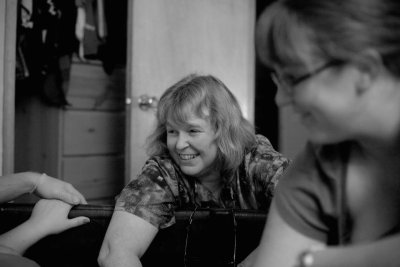
When you reach 37 weeks gestation, I bring a 100 or 150 gallon birth tub to your home for you to keep until the birth, and use or not as you wish during labor. It is easy to set up when your labor starts, and easy to empty and clean afterward. The tub rental fee is already included in the Service Package for self-pay clients, but when billing insurance they require that it be billed separately.
Here is a list of links to water births and other home births, to give you an idea what it is really like:
Breech Water Birth at Home
olive's homebirth/waterbirth
Danielle's Twin Homebirth
Homebirth of Lillith Suzanne
Jacob's home water-birth
Lila's gentle home birth
Accidentally unassisted homebirth
Born at Home by the Nielsens Photography & Cinema Chic
 Mia's Birth
Mia's Birth
Home/water birth of Adaira Jo
Shiloh's quick and peaceful water birth
Scarlett's home waterbirth
Water Birth Sept 2010 / Natural Birth
Homebirth - An Intimate Look by Linda Bentz
Breech Water Birth - “Waterbirth in the 21st Century”
Big News 2, a birth I attended with an OB nurse friend.
Videos of Birth, from Your Birth Coach
Austen's Amazing Homebirth - sometimes it happens fast! →
She's a girl, just like me
You can find many more on YouTube. Search "water birth", "home birth" and dozens will come up.
FYI:
A doctor talks about the deadly risks of interventions and lack of evidence prior to their routine use.
5 Things You Shouldn't Say to a Home Birthing Mama
Why does my practice NOT cut the baby's cord right away? Find out!
Other Common Questions:
What happens during my care with you?
During your pregnancy, your schedule of care is very similar to care with an Ob/Gyn or a CNM (see Services for more details), but you are more involved in your own care and have more choices and options, with more information and education from which to make those choices (see the page For Clients). Prenatal tests are very similar, with more emphasis on your nutritional status. Visits are mostly in my office, with some visits at home - such as when I deliver your birth tub. By the time you are 37 weeks, you need to have a few supplies ready for your birth.
When your labor starts, you will call me right away and let me know. When I and/or my assistant arrives, we set up our equipment for the birth, and settle in to monitor your labor and help you in any way necessary. After the baby is born, we stay at least 2 hours (usually 3 to 4 hours) to monitor you and baby, clean everything up after the birth, do a newborn exam (and yes, tell the grandparents that we do weight and measure the baby after you have had plenty of uninterrupted bonding time!), and make sure that breastfeeding is established. We leave mom and baby both stable, clean and fed, and tucked into bed together to rest.
Your first postpartum visit is also at your home, sometime during the first 24-72 hours after the birth. During the first week I file your baby's birth certificate (which includes applying for a Social Security number if you wish), and if you chose to have a newborn metabolic screen (PKU test), I can do that for you. Later follow-up visits are usually at my office until your final 6-8 week appointment.
What if I tear?
My practice record so far:
● Half of my mothers have had no tears at all.
● Less than a third of my mothers have any tear that requires repair, which I can do for them at home with local anesthetic and a few stitches.
● Over 99% have been minor damage only, 2-degree lacerations or less (or none).
This great outcome record is not because I only take ideal clients, who have birthed without major tears before; many of my incoming clients have experienced major trauma during a previous hospital birth, with surgical repairs! A third are first-time mothers who are the most at risk of tears, so very few of my mothers are low-risk for lacerations. 80% of my births have been above-average size babies (average birth weight in my practice is over 8 pounds 2 ounces, more than 11 ounces above the national average), and a quarter of them are over 9 pounds, yet my mothers have been able to avoid major lacerations. While I cannot guarantee that this will be your outcome, I manage pregnancy and birth in ways that have been proven to reduce trauma to both mother and baby. Some graphic but very valuable information about this topic can be found here: Bellies and Babies
What if my baby has the cord around their neck?
I hear this question a lot. This is not an emergency, and not a problem; it is very common and midwives deal with it all the time (read more HERE). I can explain more about this at your appointments and/or in Childbirth class, when we discuss how the whole birth process works, in all of its fascinating variations!
What if a complication comes up during the birth?
I hear this question a lot, too. My answer is usually "When does it not? That's why licensed midwives have all this education, and why I am attending your birth. It's what we do." If there is ever an emergency or a medical need that I cannot handle, I will transport you IMMEDIATELY; this is why you complete a written transport plan in advance. However, I welcome you to ask me about my clinical training for complications, which includes everything but instrument/surgical delivery (and many ways to prevent the need for that kind of delivery). Most of the "complications" that people fear are merely variations of normal that happen quite often, and I just calmly deal with them in the most advantageous manner for you and baby. I don't believe in introducing drama or trauma to the birth experience, I believe in reducing them both. So the short answer is - I just fix it.
What if I've been told I am "high-risk"?
Then my job during the pregnancy is to change the condition of your health until you are low-risk at term, so that you can have your home birth. If I cannot make that happen, you will still likely be healthier and better informed, and should end up having a safer and more satisfying hospital birth than you would have had without prenatal midwifery care. I consult with, and refer to, medical specialists as needed.
Keep in mind that some practitioners have different definitions of "risk", which sometimes are not based upon facts, but upon arbitrary restrictions placed upon them by non-medical authorities, such as hospital or insurance policies. These do not affect my judgment of any genuine risk factors that could affect the safety of you and your baby, or the outcome of your labor and birth. I carefully assess and address risk factors individually, and I base my decisions on facts, not policies.
How hard is it for parents to set up for a home birth?
Not hard at all - watch the short video and see! By the way, I supply you with the birth tub shown here. The birth kit contains your disposable birthing supplies, and can be ordered from HERE.
What does the midwife bring?
Everything else that you might possibly need, and many things that you will not need. I bring a huge kit (watch the VIDEO) full of emergency equipment, supplies, surgical instruments, and medicines of several types that mostly never get used. I feel that my job is to work hard to keep you from ever needing any of these things, but I have them just for the rare times when they could actually be important for you.
Who can be at my birth?
Whoever you really want, and who is there to help make you more comfortable and safe. Children are usually wonderful at births, and being there seems to encourage better bonding and less sibling rivalry, but there should always be a responsible adult there to see to all of the needs of the children so they do not distract you. Fathers are encouraged to be very involved, including catching their own baby.
Can my husband catch the baby?
My first obligation is to keep you and baby safe, but if there is not a situation that requires skilled hands working quickly while the baby is actually coming out, then absolutely YES, he can and I very much encourage him to do so! And even if I need to use some maneuvers to gently deliver a stuck shoulder, he can still be the one to receive baby and hand baby up to mom.
Is a home birth expensive, and will my insurance cover it?
Please read the page about Fees. Home birth is not at all expensive despite being personalized care, and costs far less than a hospital birth. It is usually covered by insurance, and there is also financing available to allow you to take advantage of my prompt-pay package fee!
There are endless questions I could address here, but these are the most-expressed concerns that parents wonder about and ask me when they are first considering a home birth. Always feel free to ask; I welcome questions!
Why a Washington Licensed Midwife?
Just so you know, the state of Washington has the highest requirements for education and clinical training for Licensed Midwives of any state in the U.S. For example, before a student candidate can even sit for her state exams, a minimum of 100 births are required, more than twice as many as for a licensed Certified Nurse Midwife or a Certified Professional Midwife. That is 20 times as many as are required before a doctor can deliver babies in a hospital. Food for thought, isn't it?
My Philosophy:
primum-non-nocere
first, do no harm
I and any other midwives who work with Highland Midwife Birth Services view childbirth as a normal part of a woman’s life that is best supported with good nutrition, personal responsibility of the mother for the pregnancy, and attentive clinical management throughout the childbearing cycle. It is my philosophy that the health and safety of mother and infant can best be promoted when preparation for birth is regarded as a mutual responsibility of client and midwife. Whenever possible, decisions about care are made in consultation with the client and allow for informed choice, because an essential component of midwifery care is education and empowerment of the client. Another essential component of good maternity care is maximizing and optimizing nutrition.
I believe in the Midwives’ Model of Care which states that “At the core of the Midwives Model of Care is deep respect for the normalcy of birth and for the uniqueness of each childbearing woman and her family. This approach to maternity care promotes health and helps prevent complications. Care providers who practice this model of care have excellent outcomes while providing safe individualized care.” “The midwives’ model of care includes:
● monitoring the physical, psychological, and social well being of the mother throughout the childbearing cycle;
● providing the mother with individualized education, counseling, and prenatal care, continuous hands-on assistance during labor and delivery, and postpartum support;
● minimizing technological interventions; and
● identifying and referring women who require obstetrical attention.”
“The application of this woman-centered model of care has been proven to reduce the incidence of birth injury, trauma, and cesarean section.”
(Copyright May 1996, Midwifery Task Force All Rights Reserved)
|
